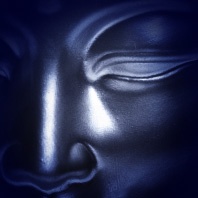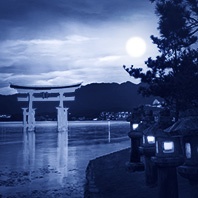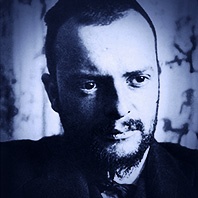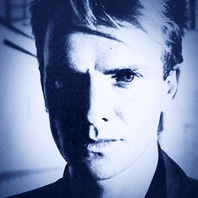Sir Charles Spencer Chaplin (1889–1977) is considered one of the first movie stars ever and made film history with his acting and his works. He is also one of the few artists who managed the transition from silent films to sound films.
Because of using archetypal imagery and symbols in his films, it is natural that the moon could also play a part somewhere. We found four references:
Read more
Peter Bradley Adams is an American singer-songwriter, who has managed amid the flood of commercial songs and loud beats, to tell his own story – with a warm voice and quiet sounds.
His song “Full Moon Song” from 2011 is one of those stories. According to his own statement, this song came to fruition after a short stay in prison (from which he did not break out as stated in the lyrics, but was released on bail). He talks about freedom that now becomes significant to him and makes a new life possible. He wants to see the world through the eyes of a child and experience love without fear of losing something.
Read more
In view of the two original principles »feminine« and »masculine«, it is tempting to attribute the feminine, receiving principle to the moon and the masculine, creative principle to the sun. And most languages, where nouns posess articles, do reflect this, like for example the Romance languages (French, Spanish, Portuguese, Italian). However, there are a number of languages, for example German, Norwegian, Polish, Slovenian, Serbian or Czech, where the moon is masculine.
So, does the moon contain more masculine quality, after all, than originally assumed?
Read more
There are probably few painters who made use of the full moon in their paintings as often as Marc Chagall (1887–1985), the French artist of Russian-Jewish descent, who was regarded as »le poète« (the poet) amongst painters, due to his symbolic shapes and colors.
Chagall lived for almost a century and if one can classify his style at all, then it would have to be expressionism. He worked in Russia, France (primarily Paris) and in the US (primarily New York) and was on an inner and outer journey throughout his life.
Read more
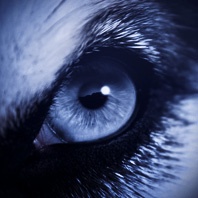 We are approaching a more sinister subject, the werewolf, a being that apparently changes from human into a wolf on the full moon. Everyone has heard about it or seen more or less plausible interpretations in movies. Where does this belief stem from? Why a wolf of all animals? And why in the full moon light?
We are approaching a more sinister subject, the werewolf, a being that apparently changes from human into a wolf on the full moon. Everyone has heard about it or seen more or less plausible interpretations in movies. Where does this belief stem from? Why a wolf of all animals? And why in the full moon light?
The word »werewolf« contains, without difficulty to recognise, the »wolf« and the word »were« that translates into »man, human« and can be found in many languages, et al. Old Enlish, Germanic, Old High German and more. So we are talking about a man wolf or a wolfman, someone who can or must take the shape of a wolf. This belief has been widespread in the old days and this had nothing to do with the cliché we are getting to see in horror movies today.
Read more
The full moon in May is a special day for many Buddhists, as the Vesak day is celebrated worldwide. According to tradition, Buddha was born on full moon in May, later became enlightened and also passed away on this day. This is how this day is honoured in countries like Singapore, Vietnam, Thailand, Indonesia and also in India, Nepal, Sri Lanka and many more. And above all of this, the full moon shines.
Read more
Japan has a custom, which is called “Tsukimi” or also “Otsukimi” that literally means “moon-viewing” (tsuki = jap. Moon). This tradition dates back to the Heian period (794–1192) where Japanese culture and the arts were refined to a high degree. At that time, elements of the Chinese “Mid-Autumn Moon Festival” were introduced in Japan, and festivals and rituals were held in the eighth sun month (which corresponds to September in our current calendar).
Read more
Paul Klee (1879–1940) was a German painter and graphic artist, one of the biggest names of the Classic Modern Era, being the time at the beginning and first half of the 20th century, which was expressed in so many different styles and is nowadays regarded as avant-garde of that time. Paul Klee created cubistic, expressionistic and surrealistic paintings. The names of his friends read like the »who’s who« in the art scene: August Macke, Wassily Kandinsky, Franz Marc, Walter Gropius, Robert Delaunay, Lyonel Feininger, Alexej von Jawlensky, Pablo Picasso …
Read more
Moonlight is with only 1 lux brightness a thousand times weaker than the sun light with more than 100,000 lux. Nevertheless, you sometimes get the feeling that it is so bright in the full moon that you should be able to read. We would like to give this a try and invite all full moon friends to start on a small reading test in the full moon light and to report back the results.
Read more
In German we call the weeks after the wedding »Flitterwochen«, which has really no relevance to the moon. In many languages it is referred to as »honey moon«, which derives from »honey month« and therefore denotes a specific time with particular sweetness after the wedding. However, not always has the connection to the moon been interpreted positively, because one saw in the waning of the Moon the symbol of the decline of attraction that the happy couple would experience during the course of years after the wedding.
Read more
In his first solo album »The Dream of the Blue Turtle« from 1985, Sting published the Song »Moon over Bourbon Street«, which is not just about the Moon. He sings about the existence as a vampire, which he had turned into years ago, and which condemned him to follow passers-by in this street, in the moonlight and the pale lamplight …
It is characteristic for this song that it spares the bloody part of the crime and only leaves an indirect description. The word vampire is also not mentioned, however, it is clearly focused on, for example in the following line: »… you’ll never see my shade or hear the sound of my feet …«
Read more


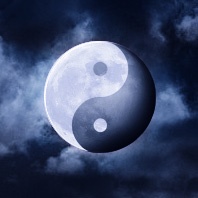

 We are approaching a more sinister subject, the werewolf, a being that apparently changes from human into a wolf on the full moon. Everyone has heard about it or seen more or less plausible interpretations in movies. Where does this belief stem from? Why a wolf of all animals? And why in the full moon light?
We are approaching a more sinister subject, the werewolf, a being that apparently changes from human into a wolf on the full moon. Everyone has heard about it or seen more or less plausible interpretations in movies. Where does this belief stem from? Why a wolf of all animals? And why in the full moon light?